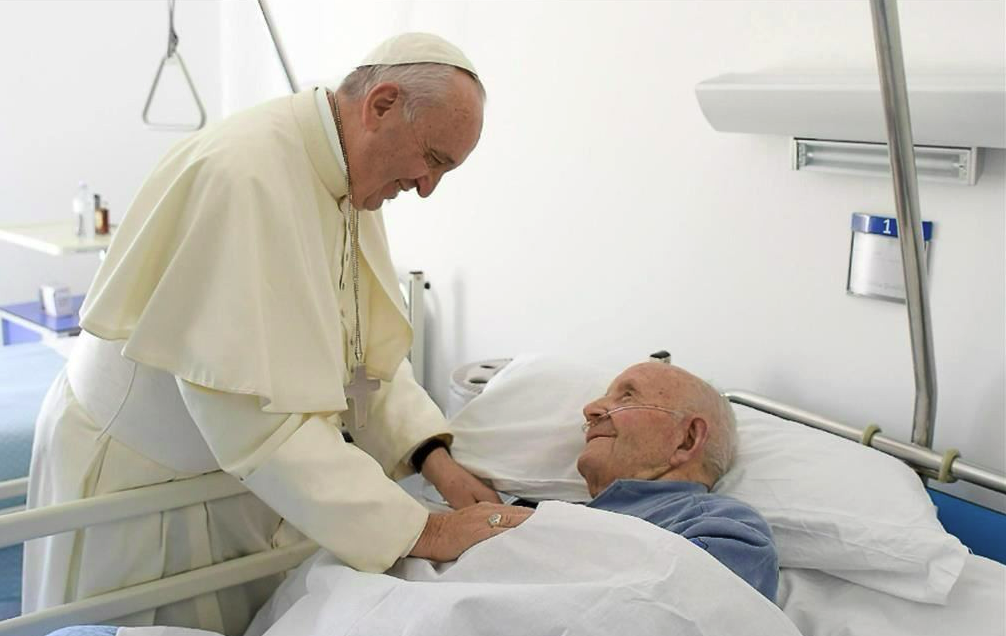These reflections are a result of more than 40 years of ministry as a Roman Catholic priest. Most of these years I spent in the Diocese of Charlotte which covers Western North Carolina. Now I am retired, and live in Medellín, Colombia where I continue to serve as a priest in the Archdiocese of Medellín.

Jesus said to them, "Did you never read in the Scriptures: The stone that the builders rejected has become the cornerstone; by the Lord has this been done, and it is wonderful in our eyes?" (Mt 21:33-43, 45-56)
https://bible.usccb.org/bible/readings/032125.cfm
This quote from Psalm 118 is key to understanding the Scandal of the Cross and the Resurrection. The One the world rejects is the One chosen by God. We continue to pray for Pope Francis and for all who are in need of healing.

There was a rich man who dressed in purple garments and fine linen and dined sumptuously each day. And lying at his door was a poor man named Lazarus, covered with sores, who would gladly have eaten his fill of the scraps that fell from the rich man's table. Dogs even used to come and lick his sores. When the poor man died, he was carried away by angels to the bosom of Abraham. The rich man also died and was buried. (Lk 16:19-31)
https://bible.usccb.org/bible/readings/032025.cfm
And so begins one of the most terrifying of all the parables of Jesus. Pope Saint John Paul II preached this parable in his first pastoral visit to the United States in October 1979, and was roundly condemned by some Catholics for daring to preach it. https://www.vatican.va/content/john-paul-ii/en/homilies/1979/documents/hf_jp-ii_hom_19791002_usa-new-york.html We still haven’t learned the lesson.

Jacob was the father of Joseph, the husband of Mary. Of her was born Jesus who is called the Christ. (Mt 1:16, 18-21, 24a)
https://bible.usccb.org/bible/readings/031925.cfm
At times Saint Joseph is often overlooked or only receives an “honorable mention” in the gospel story itself, but what an important role he has in the Holy Family of Nazareth. The church is grateful that Saint Joseph’s name has finally been added to the main Eucharistic prayers following the name of the Blessed Virgin Mary, a task that began with Pope Saint John XXIII in 1962 and was completed by Pope Francis in 2013.

Wash yourselves clean! Put away your misdeeds from before my eyes; cease doing evil; learn to do good. Make justice your aim: redress the wronged, hear the orphan's plea, defend the widow. Though your sins be like scarlet, they may become white as snow. (Is 1:10, 16-20)
https://bible.usccb.org/bible/readings/031825.cfm
Our understanding of sin rarely coincides with what God asks of us. Rarely we confess our sins against justice. Defending widows and orphans won’t win you many friends in our world controlled by billionaires, but it is precisely what God requires of us.

Jesus said to his disciples: "Be merciful, just as your Father is merciful.” (Lk 6:36-38)
https://bible.usccb.org/bible/readings/031725.cfm
Devotion to Divine Mercy is wonderful and has lots of devotees, but Divine Mercy has consequences. The Lord is always quick to remind us that we are to be merciful to others, which is always the fly in the ointment. Today is the feast of Saint Patrick the Apostle to Ireland. And we wish the top of the morning to Pope Francis! Today’s photo is of Pope Francis celebrating Mass in Ireland in 2018.



